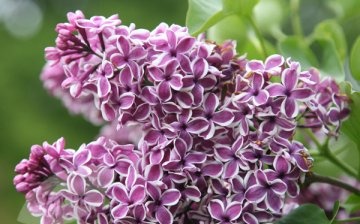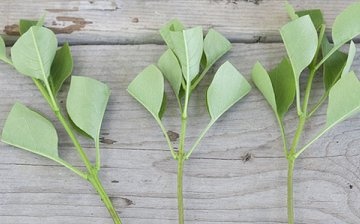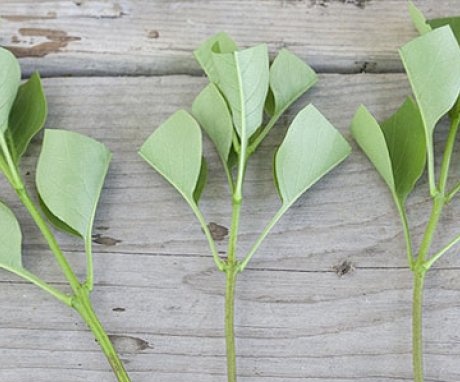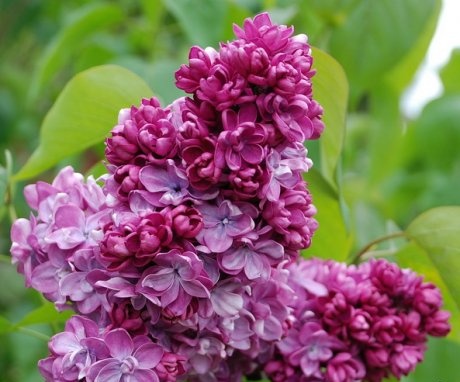Lilac - shrub or tree: description and cultivation
Lilac - one of the most common plants that can be grown in your own backyard or summer cottage. She is unpretentious in care, and in the spring her flowers look just great. And yet, even such a plant that is familiar to everyone has its own mysteries. One of the most serious questions on which the opinions of scientists differ is related to the genus: what is a lilac - a bush or a tree? It would seem that everyone knows the answer, but not everything is so simple.
Content:
Features of the structure of lilac
Ordinary lilac, familiar to everyone and everyone, is a long-term bushwith several erect trunks that can branch out to form a dense crown.
Lilacs are included in the Olive family, and there are more than 30 plant species in total.
Differing in size, color of buds and some other features. The most common species in the middle lane has become Syringa vulgaris - common lilac, it has lilac lush inflorescences.
Difficulties in classification arose due to the appearance of several hybrid species formed by natural crossing and directed breeding:
- When the characteristics of various species were combined, a special genus arose - lilac ligustrins, which in their appearance much more resemble a tall tree than a bush. Because of this, a number of scientists generally refuse to consider them lilacs, although the origin of these hybrids is well known.
- An example of ligustrins is Amur lilac - it is a tree with several trunks, the height of which can reach 26 meters. It is very difficult to call it a shrub, the plant is much higher than a 5-storey building.
- Also, Peking lilac, Japanese, Hyacinthous and some other species are tree-like, all of them differ in appearance from the modest bushes we are used to.
Some species can be easily turned into a small tree by decorative trimming... For example, Meyer's lilac is grown precisely as a tree-like plant: correct pruning allows you to form a beautiful crown, the plant looks compact and very aesthetically pleasing. Due to the wide variety of appearance of lilacs, the classification issue has not yet been fully resolved, scientists continue to experiment with breeding hybrids.
Breeding options for lilacs
Growing lilacs in the country usually do not cause any particular difficulties: an unpretentious plant does not require complex care, and it will be easy for him to find a place in the garden. Since it quickly takes root in a new place, the gardener can use several methods. breeding lilac:
- Seed reproduction. Since the seedlings germinate very slowly, this method is mainly used in breeding work when a new variety is developed. Seeds stratify within a month and in autumn they are planted in furrows, covering with a layer of mulch to protect them from freezing. Seedlings will sprout for at least a year, only after that they are ready for planting in a permanent place.
- Reproduction using green cuttings. They are cut during the period flowering, after which the cutting is planted in wet sand under conditions greenhouses or greenhouse... The air in the greenhouse should be humid, this promotes rapid root formation. Rooted plants can be moved to a permanent location or left in a greenhouse for the winter for the spring final. transplants.
- Reproduction by layering. It is used by experienced gardeners and takes at least 3 years to produce healthy cuttings. Layers have all the characteristics of the mother plant.
Vegetative methods allow you to know in advance what characteristics an adult plant will have. Germinating seedson the contrary, it gives you the opportunity to experiment, creating your own unique varieties.
Conditions for growing lilacs
Although lilacs are not particularly demanding, it is best to take care of creating a comfortable environment for them. There are several basic requirements, the observance of which guarantees rapid growth and lush flowering:
- Lilac - a light-loving plant, so it must be planted in an open space. A constant shadow will slow down growth, the shrub will begin to bloom much later.
- The soil must be drained: lilac does not like stagnant moisture and closely located groundwater. Root decay can very quickly completely destroy bush... Normal soil acidity is 6.6-7.5, it should be close to neutral.
- Lilac tolerates fairly severe frosts, but it does not like cold winds. Consideration should be given to placement so that it is protected from the wind while still receiving enough sun.
- The distance between the bushes should be at least one and a half meters, although very often there is not enough space on the site. However, it is recommended to plant bushes closer only if you plan to create hedge.
- Lilac transplanted mainly at the very end of summer - early autumn before the first frost. This is the optimal time to move young bushes from the greenhouse to a permanent place, they usually tolerate the winter calmly. In spring, lilacs can be planted, but this should be done as early as possible, before the buds wake up.
- This shrub loves fertile soil, and peat or compost can be added to the pit when transplanting. If the acidity is increased, it is reduced with ash; for faster growth, superphosphate can be added to the root zone.
- During flowering It is highly undesirable to transplant the bush: it may not take root at all, or it will stop blooming for several years even with regular watering.
Lilac is one of the most beautiful plants in the country, it will delight you in spring and summer with lush inflorescences and a magnificent aroma. This shrub has long become one of the symbols of spring and youth, and it will quickly turn into one of the important decorations of the site.
More information can be found in the video.













